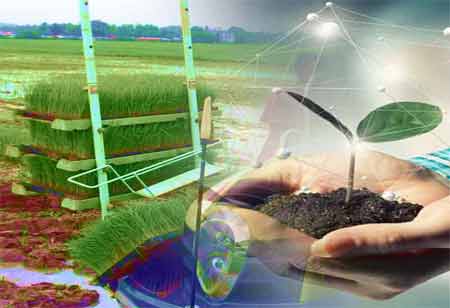Thank you for Subscribing to Agri Business Review Weekly Brief
Aquafarming and Aquaponics: A Flourishing Symbiosis
The global population continues to expand, exerting more significant pressure on food production systems.

By
Agri Business Review | Thursday, February 29, 2024
Stay ahead of the industry with exclusive feature stories on the top companies, expert insights and the latest news delivered straight to your inbox. Subscribe today.
Aquafarming and aquaponics, a symbiotic approach combining fish farming, water treatment, and beneficial bacteria, address challenges like water scarcity, soil erosion, and environmental contamination in food production systems.
FREMONT, CA: The global population continues to expand, exerting more significant pressure on food production systems. Conventional agricultural methods confront numerous obstacles, such as dwindling water resources, soil erosion, and environmental contamination. Forward-thinking strategies like aquafarming and aquaponics emerge as viable solutions to address these challenges.
Aquafarming, or integrated aquaculture, merges fish farming with water treatment to address concerns about fish waste polluting the water. Aquaponics, a key component of aquafarming, establishes a mutualistic bond between fish and plants by combining hydroponics with aquaculture in a closed-loop system. Beneficial bacteria filter the fish waste, converting harmful substances into nutrients usable by plants. This nutrient-rich water nourishes various plants, including leafy greens and herbs, fostering their growth without soil and mitigating environmental impacts.
Benefits of this Symbiotic Approach
The symbiotic approach of aquaponic systems presents several noteworthy advantages. Firstly, these systems significantly reduce water usage, with potential savings of up to 90 per cent compared to conventional agriculture practices. This attribute makes aquaponics particularly well-suited for deployment in arid or water-scarce regions. Additionally, relying on the natural cycle of fish waste as a plant nutrient source eliminates the necessity for chemical fertilisers, aligning with a more organic and environmentally friendly paradigm.
Furthermore, the interdependence between plants and fish in aquaponic systems enhances the overall health of both components. Plants play a vital role in water filtration, purging harmful toxins for the fish, while the fish continuously supply essential nutrients for the plants, fostering a balanced and thriving ecosystem. Finally, research indicates that aquaponic systems exhibit heightened productivity, producing higher yields of specific crops than traditional agricultural methods. In summary, the symbiotic nature of aquaponics offers a holistic and sustainable approach to agriculture with implications for water conservation, reduced chemical input, enhanced ecosystem health, and increased crop productivity.
Latest Developments
The field of aquaponics is in a continual state of advancement, marked by ongoing research initiatives prioritising critical areas of development. A primary focus lies in enhancing system design and automation, aiming to augment overall efficiency while concurrently diminishing maintenance requirements. Furthermore, there is a growing emphasis on integrating aquaponics with other sustainable technologies, particularly renewable energy sources such as solar power, to bolster its environmental friendliness. Researchers are also actively exploring opportunities to broaden the scope of aquaponics by expanding the variety of crops it supports. Investigations are underway to determine the viability of cultivating an extended range of plants within aquaponic systems, including fruits and select root vegetables. These collective efforts underscore the commitment to evolving aquaponics into a more sophisticated and sustainable agricultural practice.
Aquafarming and aquaponics represent a promising paradigm for sustainable and efficient food production. The symbiotic interplay between aquatic life and plants within these systems yields notable benefits, including waste reduction, water conservation, and the cultivation of an environmentally conscientious agricultural model. As ongoing research and development endeavours persist, anticipation mounts for further progress and broader integration of these pioneering methodologies in the foreseeable future.





